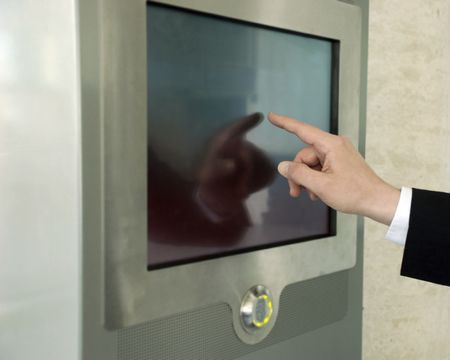A resistive touch screen consists of two surfaces facing one another. The facing sides are coated in a conductive coating (ITO). They are separated from one another using small spacer dots. The two surfaces can either be foil on both sides or foil on one side and glass on the other. The touch screen has measuring leads with a defined resistance. When the surface is pressed, a connection is created at the touched point between the horizontal and vertical leads.
The controller interpolates the position of the input using the resulting total resistance.
The 5-wire technology used most frequently in industrial applications reacts to the pressure on the screen at the touch point, like all resistive touch technologies. Resistive touch screens can be operated directly with your fingers, while wearing gloves, with a (touch) stylus, etc. Thick tools (screwdrivers, etc.) should not be used. The following criteria are some reasons for choosing PCAP technology:

Advantages:
Disadvantages:
Available sizes for resistive touch technology: